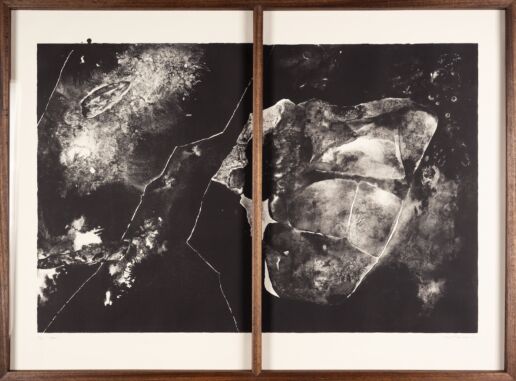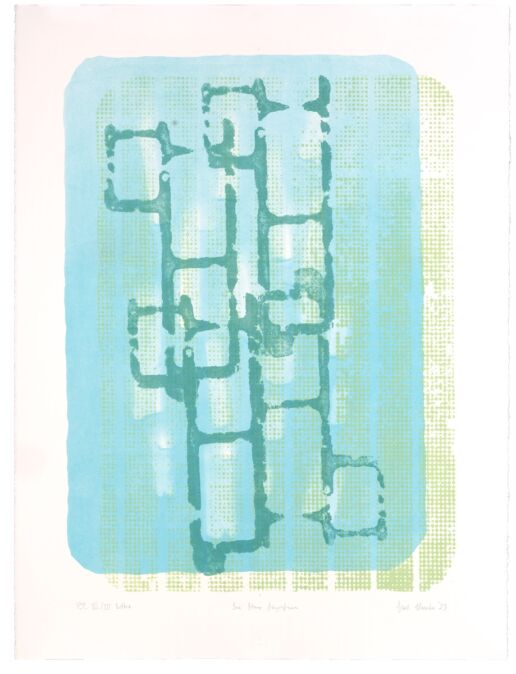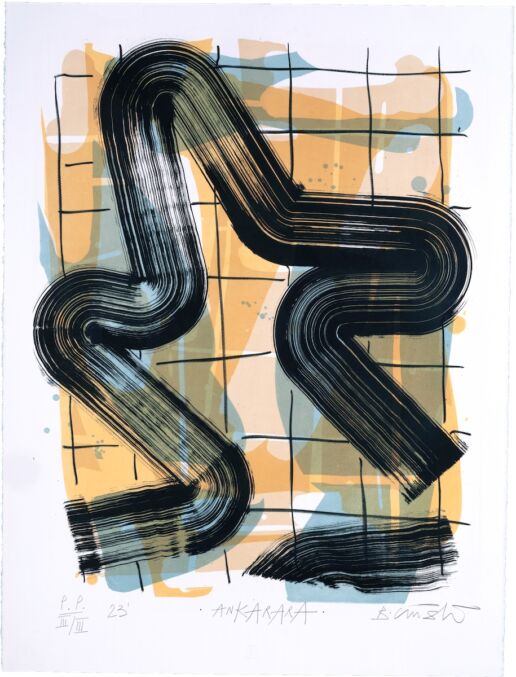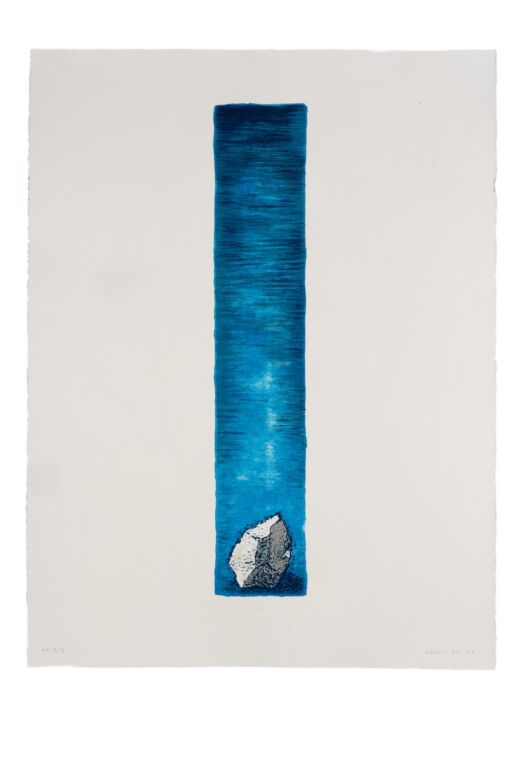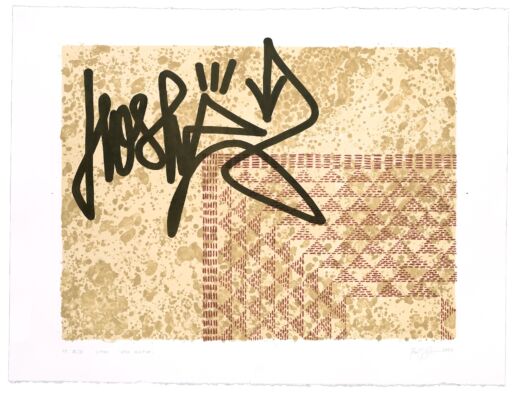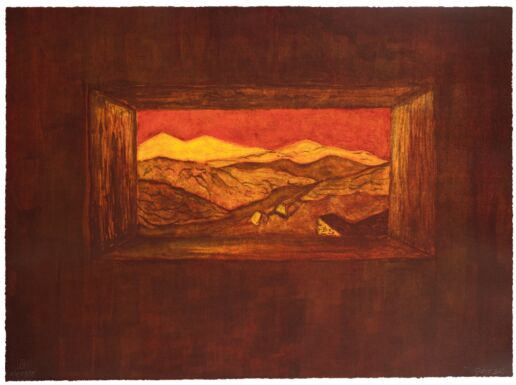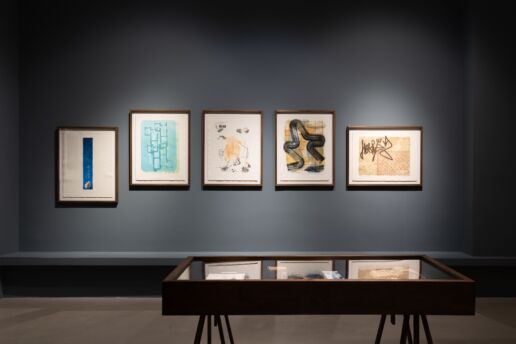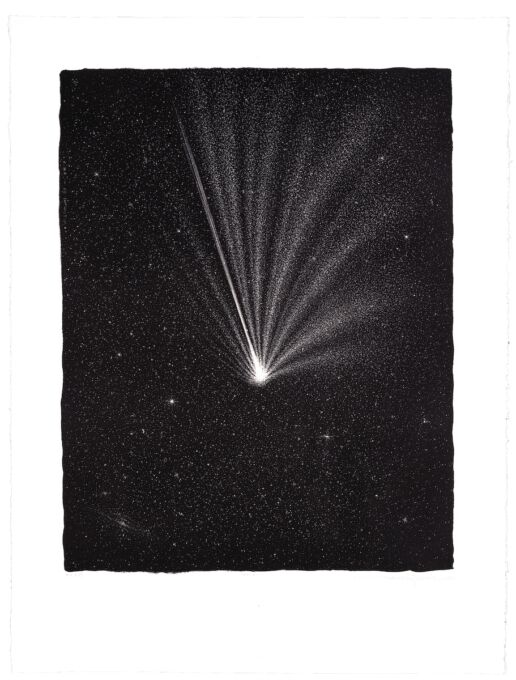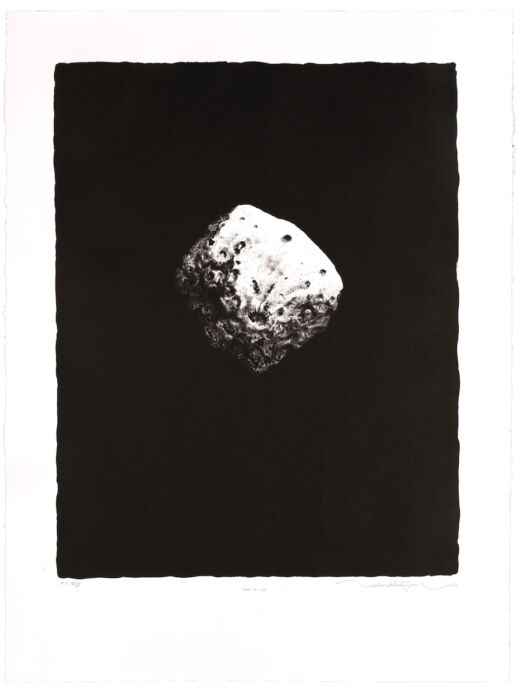A JOURNEY INTO STONES
The ‘Stones from the Sea’ exhibition opened in Ankara as part of the Lithography Days in Turkiye program organized by Dou Print Studio for the second time this year. The name of the event is inspired by the Greek word lithos [λıθος], which translates as stone in its purest form. Limestones as old as 150 million years that were once in the depths of the seas and now only available in a small number of caves and quarries take us on a journey with the works of eight talented artists curated by Ela Atakan and directed by Master Printer Doğu Gündoğdu. Ela talked to us about these special stones, the spirit of the times, what nourishes the soul, and the exhibition that is open until December 30.
How did you get involved in lithography? What fascinated you?
I have known Sophie Calle since the very beginning of my adventure in art. She called me one day while we were both based in Paris. She was on her way to a workshop and felt sure I should join her. I had to make it to Montparnasse in five minutes. I ran out the door with no idea what to expect until I entered Idem Paris, one of the largest and most established lithography workshops in the world. Idem makes lithographs of world-famous artists from Matisse to Picasso, from Kentridge to David Lynch, and I was lucky enough to have a tour of the workshop by its owner, Patrice. I was fascinated with the stones, their timeless feeling, the technique, and the process… I returned to Istanbul and shared my experience with Burçak Bingöl, an artist I was working with for the ‘A Momentary Absence’ exhibition then. Burçak told me about the lithography workshop Dou Print Studio in Ankara and its founders, Doğu and Naz. Doğu is a master printer with a passion for lithography. He trained next to Patrice and brought a lithography machine made in 1891 from the Netherlands to Ankara. He told me about the 150-million-year-old stones, how he listened to their sounds, and how he could rub down stones with sand. His passion for the art was captivating and encouraged me to get involved. We had faith in the stories hidden in the stones, and we brought together artists whose souls can relate to these stories.
Can you elaborate on lithography as a technique?
The lithography was invented by Alois Senefelder in Germany in 1796. Combining a special limestone from the Solnhofen geological mass with ink, the technique revolutionized the art of printing at the beginning of the 19th century. The artist interacts with the stone under the guidance of the master printer. The process involves acidifying the drawing, curing it under a cover, and printing it with paint on a stone that absorbs the solution. In the end, the stone is rubbed down with sand or quartz from the sea and smoothed, ready for the next artist. Aware that the mark they leave on the stone is not permanent, each artist works with a trial-and-error method under the direction of the master printer, who knows the stone better than anyone. Every stone has its unique character and reacts differently to every intervention. Reactions vary even with seasonal temperature differences. This is a journey where you never stop discovering and being fascinated. It is the exact opposite of modern production methods and their output rate.
Who is a Master Printer? What do they do?
Master Printers have the most knowledge of the selected stones. Think of them as translators or guides. They introduce the stone to the artist and the artist to the stone. Master printers have different techniques for the stones in their workshop. For example, we saw Doğu’s stone diaries in the making. We were amazed at how he carefully listened to the sound of the clapper as the ink was being applied to the stone and his ability to decipher the subtle changes in that sound to create identical prints. We saw how each artist developed different techniques throughout the process to ensure perfection in their work. We witnessed how he made artists comfortable out of their own workshops and how he guided them and created space for them. All lithography workshops in the world collaborate. Each one helps the other, and all workshops are informed when a stone is found or changes hands. This is a way of working, and the extent of solidarity is unusual in the times we live in…
How do you go about telling the story of stone?
I had just finished reading Marcia Bjornerud’s ‘Timelessness’ – a book about the layers of stone and calculating the age of the earth. After listening to Doğu’s approach to lithography, I was convinced that there was no need to look further than stone for an exhibition in the scope of the second ‘Lithography Days.’ The Ancient Greek word Lithos means stone from the sea. You provide artists with 150-million-year-old limestones, which are rare and found only in a small number of quarries worldwide. Artists are left to work with an incredibly organic material that they have no control over under the directions of the master printer, who is familiar with the material. For this exhibition, I chose artists who had some affiliation with lithography and, more importantly, artists capable of interpreting the story of the stone and time, the two core themes of the exhibition. Ahmet Doğu İpek, Alessandro Rizzi, Cora Texier, Bartłomiej Chwilczyński, Burcu Yağcıoğlu, Nermin Er, Selim Birsel, and Sibel Horada visited Dou Print Studio between June and November. Guided by master printer Doğu Gündoğdu and based on their own production, the artists created new works on timelessness by looking at the history of the stone, its depth in water, the fossils, its changing forms, associations, and inertia. We thought about ways of incorporating their personal story and practice into the story and time frame of the stone.
There must have been many unexpected developments during the process. Can you tell a story that touched you?
There are many stories from this process, but above all, this exhibition showed me that the real curator is the stone. It taught me to be patient with a sense of mutual trust. Working with an ancient material that has set boundaries and a framework eventually turns you into a translator and a guide. I tried to provide the artist as much freedom as possible within that framework. I left all the artists alone with Doğu on their second day at the workshop. Over time, the whole story evolved into a very simple matter. Ultimately, all the works developed an amazing dialogue with each other. It was so exciting to utilize a 200-year-old printing method in 2023 and to witness the same depth and style and slow down time. We saw that lithography was not lost at all. We could revive it and reinterpret it in a contemporary way. We learned to trust each other and to speak a new language.
A fossil was found in the stone the day before Selim started working in the studio. Doğu had to grind and sand the stone for hours. Burcu’s drawing process was time-consuming, so she came to the workshop in August, our only free month. August is typically very hot, and the stone does not absorb the ink when temperatures are high. Burcu came to the workshop at 7 am every morning, and Doğu had to rub the stone with ice regularly to prevent overheating.
The opening sentence of the exhibition text is, ‘Everything changes, but nothing disappears.’ During the time I spent chatting with Ela, we found ourselves talking about how nature, people, and even stones change and learn over time. Ka Visual and Cultural Arts, the exhibition host, is a performance venue rather than a gallery. This made it possible to organize open studio days that bring together artists with students and enthusiasts before the exhibition. This perfectly overlaps with this entire learning process. Ela might claim that the curator is the stone, but she deserves credit for skillfully bringing together artists who relay the story of the stone and a passionate master printer who can hear the sounds of 150-million-year-old stones. Giving ancient materials the value they deserve, adding a contemporary perspective to a 300-year-old technique, and changing the flow of time in Ankara, this exhibition invites all visitors to discover their own pace of time.
Check dou.printstudio on Instagram for updates on the exhibition and related events.



